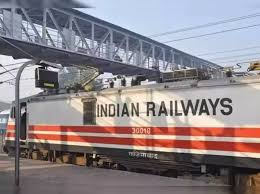Understanding RVNL and Its Role in Railway Development

Introduction
Rail Vikas Nigam Limited (RVNL) is a significant public sector unit in India, playing a crucial role in enhancing the country’s railway infrastructure. Established in 2003, RVNL aims to promote the expansion and modernization of the Indian Railways, ensuring better connectivity across the nation. Given the importance of rail transport in India, RVNL’s activities are vital for economic growth and socio-economic development, making it a crucial player in the railway sector.
The Key Projects of RVNL
RVNL has been involved in numerous projects that aim to augment the capacity and efficiency of Indian Railways. For instance, the Mumbai-Ahmedabad High-Speed Rail Project is one of the most prominent initiatives, aiming to introduce high-speed bullet trains to India’s railway network. The company is also working on several other projects, including doubling and electrification of railway lines, station redevelopment, and construction of new lines across various regions. Alongside infrastructure projects, RVNL has been instrumental in implementing modern technology solutions for safety and operational efficiency.
Current Developments in RVNL
Recently, RVNL has reported a significant surge in its profit margins for the fiscal year 2023, indicating robust growth and development. The company has successfully completed a number of milestones, contributing to the National Infrastructure Pipeline. Furthermore, RVNL is also focusing on sustainable practices by exploring the use of green energy sources and reducing the environmental footprint of railway operations.
Future Prospects
The Indian government has ambitious plans to increase investments in railway infrastructure. With the expected allocation of funds in upcoming budgets, RVNL is poised to play an even larger role in the sector. Experts predict that the focus on the privatization of some railway segments and Public-Private Partnerships (PPPs) will enable RVNL to expedite projects and innovate further. This suggests a promising future for RVNL as an entity that not only supports railway development but also contributes to employment generation and regional development.
Conclusion
As India strives for modernization and economic development, RVNL’s role is paramount in shaping the future of railway transport. The company’s ongoing and upcoming projects herald a new era for Indian Railways, offering enhanced capabilities, improved safety, and better passenger experience. The strategic initiatives undertaken by RVNL reflect the government’s commitment to transforming the country’s transport infrastructure, thereby fostering sustainable economic growth. Observers of the railway sector will undoubtedly keep a close eye on RVNL’s advancements and its impact on India’s railway landscape in the years to come.









